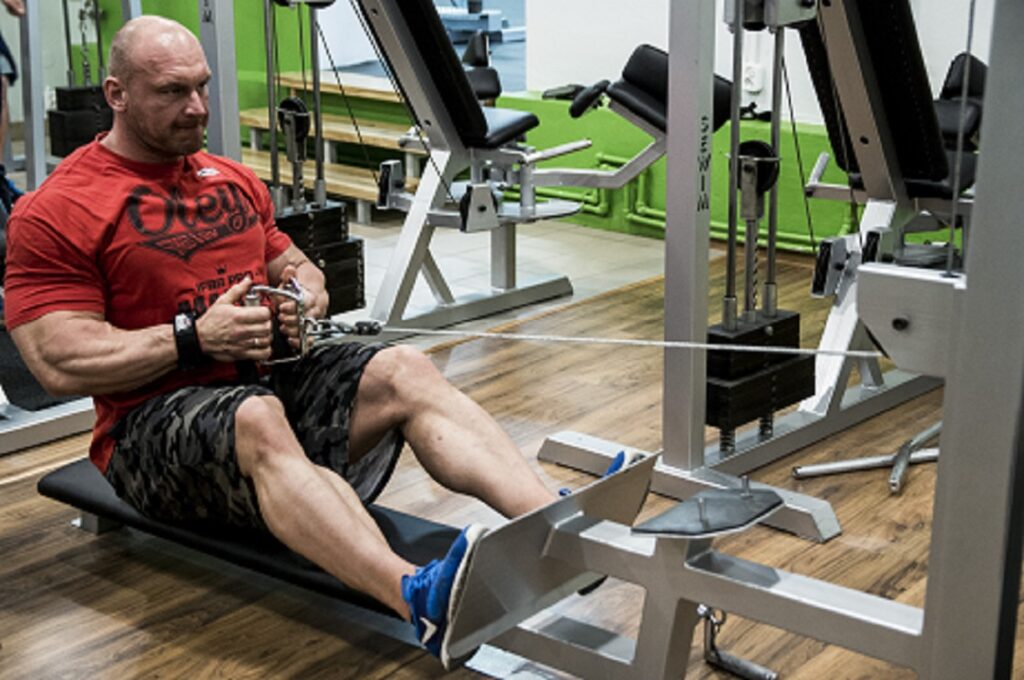Freepik / master1305
Everyone has a weakness. In the beginning, everything is lagging. But the more you grow, the more your own unique liabilities emerge. Your body parts don’t all expand at the same rate, nor do all areas of individual muscles. So everyone has a weakness. The key to successful bodybuilding is eliminating, to the best of your abilities, lagging areas so all parts are nearly equally developed. The proven way to do this is prioritization. Let’s explore the priority principle.
THE PRIORITY PRINCIPLE
Prioritization is a fancy word for emphasizing your weak points and deemphasizing your strong points. The first thing you need to do is determine what those are. The best way to get an accurate assessment is to pose in front of a bodybuilding judge, competitor, or just someone who knows physique symmetry. Barring that, digital photography and mirrors are invaluable tools for seeing yourself from multiple angles. The important thing is to get or give an objective opinion, because pinpointing your shortcomings is the only way to target them correctly.

Though everyone has a weakness, sometimes this is something—like narrow clavicles or high calves—not easily corrected via hoisting metal. And sometimes your weakness just isn’t all that weak. If you’re one of those lucky and rare people, you can still emphasize specific areas—such as outer quads or back thickness—for periods of time. Prioritization is a great motivator. Seven-time Mr. Olympia Phil Heath, in consultation with his trainer, Hany Rambod, and seven-time 212 Mr. Olympia Flex Lewis, guided by his trainer, Neil Hill, came up with at least one physique area on which to focus their training in preparation for their annual Olympia defenses. Sometimes this was not a flaw but a strength used to fend off others. By emphasizing its training, they made certain it remained a key weapon and never becomes a vulnerability.
There are seven ways to prioritize, and these can be combined.
1. Work Your Weakness First.
Hit your lagging area initially in your workout and your strongest areas last (or not at all). For example, to focus more on upper chest, do incline presses and incline flyes first and other chest exercises after that. In this way, you’re able to address your straggler when your energy, strength, and focus are highest to better overload that area and stimulate growth.
2. Increase Volume For The Weakness.
You may also want to boost the workload for the targeted area. For example, the following routine emphasizes medial deltoids by hitting them first in the shoulder routine with three exercises (including wide-grip upright row) followed by only one exercise for front delts and one for rear delts.

SHOULDER ROUTINE WITH MEDIAL DELTS PRIORITY
Dumbbell Side Lateral — 4 x 8-12 reps
Cable One-arm Side Lateral — 3 x 10-12 reps
Wide-grip Upright Row — 3 x 10-12 reps
Seated Dumbbell Press — 4 x 8-12 reps
Machine Rear Lateral — 4 x 10-12 reps
3. Focus Whole Workouts.
It’s sometimes most effective to give your greatest liability its own workout or pair it with only a smaller body part, like abs. In the case of lagging legs, try breaking quadriceps and hamstrings into separate sessions, days apart.
4. Avoid Strong Points.
On the flip side, you may be lucky enough to have a body part that is so far outpacing the rest of your physique that you can and should avoid working it entirely until better balance is achieved. Doing so frees up time and energy to devote to your laggards.
5. Double Up.
You can arrange your split to hit straggling parts twice as frequently as strengths. For example, if your back isn’t keeping up, try attacking it with two workouts weekly while you stress other areas once. Do different exercises in those two sessions. For back, you can devote one workout to thickness (deadlifts and rows) while the other is focused more on width (mostly pullups, pulldowns, and pullovers).

BACK PRIORITY TRAINING SPLIT
Monday — Back (width)
Tuesday — Legs
Wednesday — Chest
Thursday — Shoulders
Friday — Back (thickness)
Saturday — Arms
Sunday — Rest
6. Rest Before.
Assemble your split to make certain weaknesses are hit in the first workout after a rest day when you’re raring to go. So, for example, if you train every day but Sunday and your legs lag, make a squat rack appointment for Mondays.
7. Expose Weakness.
During his teen years, Arnold Schwarzenegger’s calves were like pool cues. When he made expanding his lower legs his top priority, he wore shorts constantly—he even cut his sweat pants off at the knees—thus exposing his greatest liability to everyone in the gym and fueling his drive to turn it into a strength. He did, ultimately building two cows. Don’t hide weaknesses. Expose them, and eliminate them.
PRIORITY PRINCIPLE BASICS
✷ Focus more on your physique weaknesses and less on your strengths.
✷ Arrange your workouts to hit your weakest muscle or part of a muscle first when your energy, strength, and focus are greatest.
✷ A lagging body part may need to be trained twice weekly, doubling its workload.
✷ Work a weak body part after a rest day.
PRIORITY PRINCIPLE TRAINING TIPS
✷ Use photos, video, or the assessment of an expert to evaluate strengths and weaknesses.
✷ If possible, don’t keep your weak body parts covered up. Expose them to motivate improvements.
✷ Increase the intensity and/or volume to attack your weaknesses.
✷ Write down specific goals, such as measurements and exercise totals, to map out a prioritization strategy.
















































